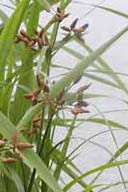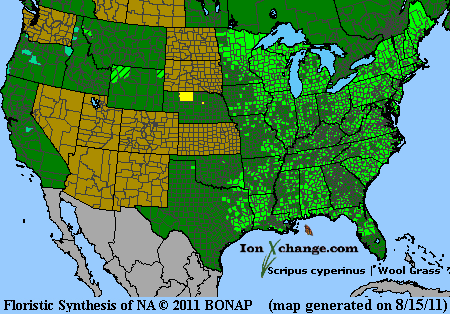 Loading... Please wait...
Loading... Please wait...- Home
- SEEDS
- SEED MIXES
- BUY PLANTS
- Info Request
-
Educational Videos
- Greenhouse Transplanting Demonstration
- Native Seed Cleaning demonstration at Ion Exchange Native Seed and Plant Nursery
- Attracting Butterflies
- Bidens - Bidens cernua Harvest Video
- Big Blue Stem Harvest
- Butterfly Milkweed Video
- Button Blazingstar - Liatris aspera Video
- Buttonbush - Cephalanthus occidentalis Video
- Canada Anemone - Anemone canadensis Harvest Video
- Cardinal Flower - Lobelia cardinalis Video
- Control Burn - Wildflower Field
- Cream Gentian - Gentiana flavida
- Culver's Root - Veronicastrum virginicum Video
- Cup Plant - Silphium perfoliatum Video
- Dormant Seeding | Planting
- Earthyman's Favorite Wildflowers Video
- Eco-Friendly Golf Course Seed Mix
- Floating Islands
- Fringed Loosestrife - Lysimachia ciliata Video
- Giant Yellow Hyssop - Agastache nepetoides Video
- Indiangrass - Sorghastrum nutans Video
- Iowa Prairie Partner Program
- Leadplant - Amorpha canescens (Potted) Video
- Meadow Blazingstar - Liatris ligulistylis
- Midland Shooting Stars - Dodecatheon meadii Video
- Native Plant Nursery Field Irrigation Experiment
- Nodding Onion - Allium cernuum Video
- Ohio spiderwort - Tradescantia ohiensis Video
- Old Man's Beard - Clematis virginiana blooms Video
- Oxeye Sunflower - Heliopsis helianthoides Video
- Prairie Spiderwort - Tradescantia bracteata
- Purple Coneflower - Echinacea purpurea Video
- Rain Garden or Water Garden Video
- Rattlesnake Master - Eryngium yuccifolium Video
- Riverbank Stabilization - Wetland Plants
- Rose Mallow - Hibiscus militaris Video
- Rosinweed - Silphium integrifolium Video
- Royal Catchfly - Silene regia
- Showy Tick Trefoil - Desmodium canadense Video
- Sneezeweed - Helenium autumnale Video
- Swamp Betony - Pedicularis lanceolata Video
- Swamp Milkweed - Asclepias incarnata Video
- Sweet Blackeyed Susan - Rudbeckia subtomentosa Video
- Tall Coreopsis - Coreopsis tripteris Video
- Urban Butterfly Garden
- Wild Bergamot - Monarda fistulosa Video
- Wild Geranium - Geranium maculatum Harvest
- Wild Goldenglow - Rudbeckia lanciniata Video
- Wild Petunia - Ruellia humilis Harvest Video
- Woodland Knotweed - Polygonum virginianum Video
- Yellow Coneflower - Ratibida pinnata Video
- Blog
- Resources
- Policies
Contact Us
Phone:
563-419-0837
or 563-535-7231
Email:
hbright@ionXchange.com
Browse Products
Add to Wish List
You Recently Viewed...
Our Newsletter
Product Description
River Bulrush ( Scirpus Cypernius) is part of the sedge family (Cyperaceae) and is an excellent shoreline stabilizer. It grows 3 - 5 feet tall and can be separated from grasses and rushes by looking at the spikelets, which have a spiral arrangement of scale covered flowers and nutlets. It has a stout, triangular leafy stem. The thick and sturdy stem was used to build furniture and shelters. They are also tall, straight and decay resistant. Favored by geese during migration as the tubers are an important food source. Nutlets are eaten by a variety of waterfowl including black duck, canvasback, mallard, pintail gadwall and redhead.
| Sun Exposure | Prairie |
| Soil Moisture | Wet, Wet Mesic |
| Bloom Time |
|
| Bloom Color | |
| Max Height | 6 feet |
| Wetland Code | OBL |
| Germ Code | C(69) or M, D |
| Seeds Per Ounce | 4,300 |
Edible Uses: "The stems are peeled and eaten. Root - raw or cooked. The roots form tubers at intervals along their length and new plants are formed from these tubers. When first formed, the tubers are white and starchy with a sweet coconut-milk flavour, they become black and woody with age. Tubers can be up to 3cm in diameter.
Medicinal Uses: This plant was ranked 11th in a survey of 250 potential antifertility plants in China.
Other Uses: The roots have been used to form the black part of the basket design. The roots were stained by burying them in the mud with ashes until a black colour was obtained.
Herbal Uses: Unknown











